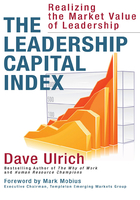
CHAPTER 3 Personal Proficiency
Investors Want Leaders with Good Character and Health
A leader is often the face of a company. In founder-led companies, the leader’s personal style shapes the culture of the company—think of Alibaba, Amazon, Facebook, Marriott, Starbucks, Tata, Virgin—but it can happen later in a company’s life, too—consider Ken Chenault at American Express, Alan Lafley at Procter & Gamble, and Indra Nooyi at PepsiCo. When my colleagues and I interviewed investors about what they want from leadership, the responses often focused on the personal style of the most senior leader. The top leader’s charisma and personal charm do tend to boost investor confidence, but attending only to magnetism may be more superficial than substantive.
The depth of a leader’s personal proficiency goes beyond dress, physical appearance, and elocution. Investors can determine a leader’s style more thoroughly by assessing six elements of a leader’s personal proficiency—and these assessments should be done not just with the top leader but with the whole top leadership of the organization.
The essential logic for personal proficiency comes from exceptional work that Jim Loehr and Tony Schwartz have called creating the corporate athlete. Loehr and Schwartz found that when leaders care for themselves in four areas—physical, emotional, mental, and spiritual (or moral)—their energy, well-being, and performance will surpass that of less-attentive leaders. Using these ideas, many companies have invested in upgrading the personal proficiency of their leaders with excellent results. For example, Procter & Gamble has put more than 10,000 people through corporate athlete training. Survey results show that those who participate in the training increase energy outside of work (+36% versus those who don’t attend), fitness and healthy lifestyle (+17%), personal well-being (+13%), and work/life effectiveness (+13%). These personal improvements show up in increased productivity at work as well.
Loehr and Schwartz found that when leaders care for themselves in four areas—physical, emotional, mental, and spiritual (or moral)—their energy, well-being, and performance will surpass that of less-attentive leaders. Using these ideas, many companies have invested in upgrading the personal proficiency of their leaders with excellent results. For example, Procter & Gamble has put more than 10,000 people through corporate athlete training. Survey results show that those who participate in the training increase energy outside of work (+36% versus those who don’t attend), fitness and healthy lifestyle (+17%), personal well-being (+13%), and work/life effectiveness (+13%). These personal improvements show up in increased productivity at work as well.
Slightly adapting this framework gives investors a disciplined approach to evaluating the personal proficiency of the leaders in a potential investment. Figure 3.1 identifies six elements for assessing leaders in this area. While it may be that no one leader excels at all six elements, the leadership team would collectively demonstrate them to depict substance behind style.
